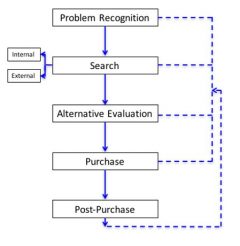Speaker: Dr. Margaret Taylor
Date: March 5th, 2020
Dr. Margaret Taylor is a Research Scientist at Lawrence Berkeley National Laboratory and recently held a Fulbright Canada Research Chair in the Environment and Economy at the University of Ottawa (2018-19). She is affiliated with several units of the University of California, Berkeley, where she was a public policy professor from 2002-11. In addition, she held a research appointment at Stanford University’s Precourt Energy Efficiency Center (2012-18) and served as the Stanford co-Chair of the Behavior Energy Climate Change conference for most of that time (2013-18). Margaret’s research advances “Innovation Decision Science,” which addresses human and organizational decision-making related to the invention, adoption, and diffusion of technologies that help reduce climate change emissions and impacts.
is a Research Scientist at Lawrence Berkeley National Laboratory and recently held a Fulbright Canada Research Chair in the Environment and Economy at the University of Ottawa (2018-19). She is affiliated with several units of the University of California, Berkeley, where she was a public policy professor from 2002-11. In addition, she held a research appointment at Stanford University’s Precourt Energy Efficiency Center (2012-18) and served as the Stanford co-Chair of the Behavior Energy Climate Change conference for most of that time (2013-18). Margaret’s research advances “Innovation Decision Science,” which addresses human and organizational decision-making related to the invention, adoption, and diffusion of technologies that help reduce climate change emissions and impacts.
Background: Electric Vehicles in California
Easy access to transportation has come to be a hallmark of any industrialized country in the twenty-first century. The convenience and independence that internal combustion motor vehicles have provided has been a key part of this transformation. However, the negative aspects of these motor vehicles are increasingly coming to light. Air pollution, climate change, congestion, accidents, and noise are all causing decision-makers around the world to reconsider the role that internal combustion vehicles play in our society and to look for alternatives.
It is in light of this growing recognition of the negative effects of internal combustion vehicles that California began enacting legislation to promote the uptake of plug-in electric vehicles (PEVs, which includes hybrids and electric vehicles). Due to specific topographical and societal characteristics of the State, specifically in Los Angeles, California came to be a leader in this policy sphere, enacting air quality and PEV legislation prior to the rest of the USA. California did not just focus on the health and anti-pollution benefits of PEVs, it also recognized the economic development potential of the PEV industry. After the end of the Cold War in 1989, the State began a deliberate re-purposing of its aerospace industry to support the PEV industry and other clean technology.
Post-2000, California continues to promote and support PEVs, but another driver beyond health and economic development has come into play: grid resiliency. This is an important driver in a state with as much solar capacity as California does. The over-generation of solar electricity during the day could be balanced with a sufficient number of PEV batteries: the vehicles could store the excess electricity when demand is low and feed the grid when the electricity is needed.
In California, these drivers of health, climate change, economic development, and grid resiliency have led to a number of regulations. From LEV-I (low-emission vehicles) in 1990 to LEV-III in 2012, the State pursued performance-based policy requirements, based on sales mandates. This market-based solution was meant to be technologically neutral, promoting the uptake of the best technology according to the rational consumption of buyers. Yet uptake of PEVs was much slower than expected; consequentially, targets had to be altered over the years to accommodate the notably lethargic uptake of the technology.
The Behavioural Aspect of Technology Diffusion
Considering California’s history of leadership in the realm of air pollution legislation and PEV promotion, it is worth questioning why this may be. Dr. Taylor suggested that perhaps what is needed is a reconsideration of the process by which clean technology diffuses and is taken up by consumers. Instead of a market-based policy solution that focuses on producers and assumes the rational uptake on the part of consumers, decision and behavioural science needs to be considered. Currently, California’s Zero-Emission Vehicle (ZEV) legislative framework does not take this alternative approach into account. Instead, it continues to focus on the production and innovation aspects of PEVs. This is despite the fact that the number of hybrid and electric vehicles available has skyrocketed, outstripping demand years ago.
When analyzing the behavioural and decision-based aspects of PEVs, several characteristics of the technologies are desirable. Beyond the less tangible benefits of societal health and climate change mitigation, these vehicles are fun and safe to drive, increasingly convenient to charge, cheap to operate and maintain, and overall costs are becoming comparable to that of internal combustion vehicles. However, the lack of emphasis on the decisions and behaviour of consumers within existing policy frameworks and approaches to promoting the technology has led to limited uptake.
Dr. Taylor therefore presented an alternative framework for the diffusion of PEV technology, one that accounts for the peculiarities of human nature and decision-making. This model is the Engell-Kollat-Blackwell (EKB) model of consumer behaviour; a model which incorporates alternative variables which affect consumer decisions, such as values, culture, and personality. The EKB model, which can be seen in Figure 1 below, begins with a recognition of the problem. In the case of PEV uptake, this would be the recognition that a new means of transportation is required. The consumer would then move on to searching and evaluating alternatives, with both rational and subconscious criteria, before moving forward with a purchase. In the case of PEVs, the post-purchase behavioral aspect is particularly interesting since many new PEV owners are so happy with the purchase they become ambassadors for the technology, thus facilitating even more uptake. In short, this model uncovers the multiple factors which affect the uptake of clean technology which are ignored under a traditional producer and innovation-focused model of technology diffusion.

The EKB Model of Consumer Behaviour (from https://seeds.lbl.gov/consumer-behavior-evs/)
Gender and the Diffusion of Electric Vehicles
Overall, men own more vehicles than women. However, this gender divide widens considerably when considering ownership of electric vehicles (EVs). While the male-to-female ratio for normal internal combustion vehicle ownership is approximately 60:40, this gender discrepancy grows to 80:20 with EVs. In her research, Dr. Taylor has found that the there are many reasons for this phenomenon, including the fact that women generally have lower incomes, make more stops, are more sensitive to time concerns, and are more concerned with safety and vehicle capacity. In terms of policy solutions, several of these could be addressed by more effective placement of EV chargers and allowing EV drivers access to carpool lanes. However, specific policy interventions would have to be tailored to each specific context and the barriers faced by women there.
The behavioural aspects of PEV diffusion are therefore extremely important but have been largely overlooked. However, accounting for the behavioural dimensions of technology uptake in transitioning to a low-carbon future is and will continue to be important. Whether the subject of discussion is electric vehicles, automated vehicles, or energy efficiency, consumer behaviour will ultimately decide the success or failure of the technology.
Discussion
Q: Can the specific findings of your research regarding the diffusion of this technology be extrapolated across time and in different jurisdictions?
A: No, not really. There are significant variations in the incentives offered by different governments and the specific characteristics of each region will determine the barriers which PEV adoption faces. These could include topographical characteristics, traffic characteristics, cultural characteristics or other.
Q: In your analysis of the gendered uptake of EVs, was range anxiety taken into consideration?
A: Yes, though it was not called range anxiety. Instead, this was broken down into its components for more thorough analysis.
Q: What is your take on the hydrogen fuel cell market? Is it very different from that of EVs?
A. It is extremely different. There are efforts in California to promote this technology as well, such as building a hydrogen highway with fuelling stations. However, hydrogen technology is not being received with the same level of popularity as EVs. There is a conflict between these two markets, but overall hydrogen is simply not as attractive to consumers, especially with the massive growth of some EVs such as Tesla.
Q: In Canada, several big automakers are pushing against more stringent fuel standards, slowing progress towards climate goals. Why do you think this is and how should policymakers respond?
A: It’s important to note that not every automaker in Canada has the same position on this issue, companies differ in terms of investment decisions in EVs and battery technology. Some have more progressive and green corporate strategies and thus are not opposed to the imposition of higher standards. Within these companies, the economic aspect of this transition to low and zero emission vehicles will become increasingly important. If a low-carbon future is inevitable, those who oppose it will be left behind.
Precis completed by Silke Popescu, MA Sustainable Energy student.
Learn more about Margaret’s Research here.